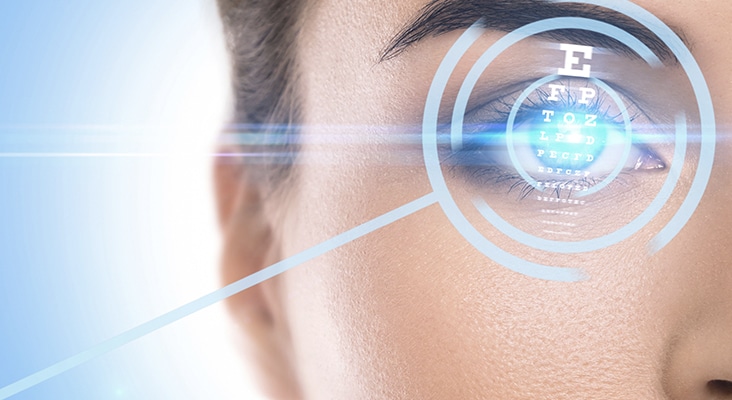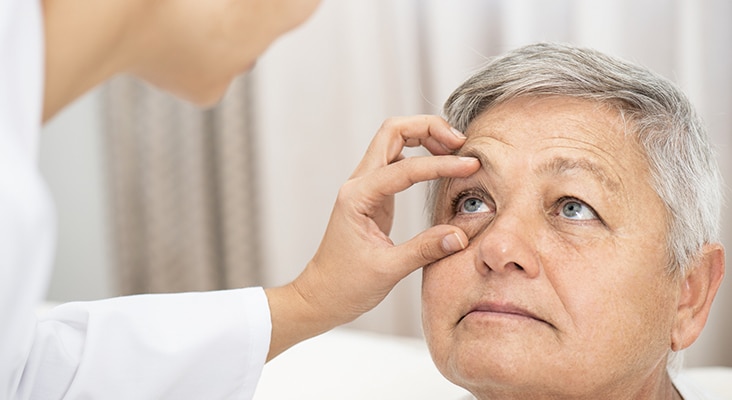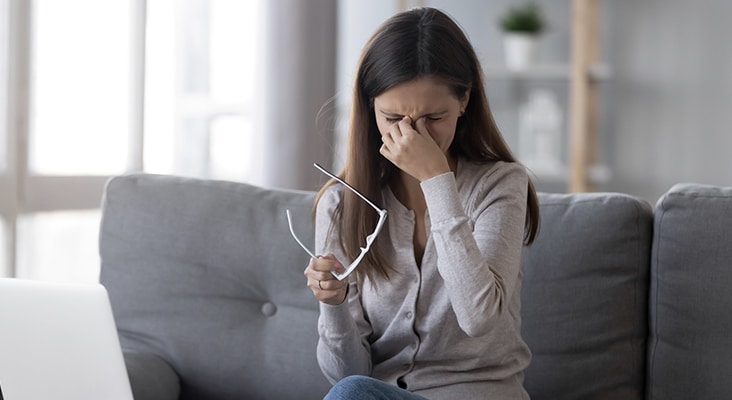Importance of Visual Acuity
Visual acuity is defined as the clarity or sharpness of vision measured at a distance of 20 feet.

Visual acuity is defined as the clarity or sharpness of vision measured at a distance of 20 feet. Typically, the clarity of vision is measured by the ability to distinguish different sized letters or shapes at a fixed distance, usually with a Snellen chart. Normal visual acuity is rated as 20/20 vision. Visual impairment is defined as acuity less than 20/60, and blindness as visual acuity worse than 20/400.
Photo Credit: Jun / iStock / Getty Images Plus

Effects of Aging
In dentistry, optimal visual acuity is vital for the assessment and treatment of patients. It is imperative to have a clear and a focused field of vision to be able to evaluate oral tissue conditions, accurately evaluate periodontal measurements, assess radiographs, and detect oral disease. Oral health professionals are at risk for increased eyestrain and reduced visual acuity over the course of their careers due to the influence of age on visual functioning and the increased use of technology in the dental setting, which causes digital eyestrain. Thus, oral health professionals need to be aware of visual acuity changes that can occur throughout their lifetimes and make necessary adjustments to maintain optimal clinical performance.
Photo Credit: solidcolours / E+

Need for Optical Assistance
Oral health professionals need good visual acuity to focus at a short distance (27 cm to 50 cm) on the oral cavity. Moreover, the eye must be able to quickly accommodate (change its focus) to an intermediate distance (40 cm to 90 cm) to instruments, records, and radiographs in a fixed location, such as a table or a computer screen. Refractive errors impede the clinician from the flexibility to visually adapt, and, thus, optical assistance becomes necessary.
Photo Credit: Roxana Jifcovici / iStock / Getty Images Plus

Reducing Eye Strain With Loupes
The most common occupational hazard in dentistry is eyestrain. Visual deficiencies can be compensated with the use of optical magnification aids such as loupes. Galilean loupes are common in dentistry, with magnification ranging from 2.5 x to 3.5 x, and an adjustable working distance to meet the clinician’s ergonomic needs. Galilean loupes, however, offer a limited field of view. Conversely, Keplerian or prismatic loupes allow for various magnifications and working distances with a preferred range of 3.5 x to 6 x, but they are heavier and usually higher priced than Galilean loupes. The angulation and alignment of loupes must be custom fit to the clinician to help prevent eyestrain. Additionally, illumination is an important factor. Enhanced illumination increases both the depth of field and visual acuity. Although oral health professionals with presbyopia can compensate by using magnification devices, they may not be able to achieve the same visual acuity as they had in their youth.
Photo Credit: Yuri_Arcurs / E+

Issue of Digital Eyestrain
Today, with an increase in technology use, many individuals experience symptoms of digital eyestrain. The most common indicators of digital eyestrain are headaches, dry eyes, blurred vision, and neck and shoulder pain. Increasingly, oral health professionals are using technology when treating patients. Digital radiography, intraoral scans, electronic health records, and prescription and insurance databases are used in the day-to-day functions of the dental team. The combined use of these technologies in the dental practice increases computer screen time, which may raise digital eyestrain risk.
Photo Credit: fizkes / iStock / Getty Images Plus

Solutions to Alleviate Digital Eyestrain
To alleviate digital eyestrain, eyewear—including contact lenses with magnification, blue-light filtering, and anti-reflective capabilities—are recommended. In addition, other solutions to reducing digital eyestrain include: taking frequent breaks, reducing overhead lighting to decrease screen glare, increasing text font, and maintaining proper viewing distance from the digital device. Oral health professionals should have near vision tested regularly, and discuss their digital activities with an eye care provider to relieve eyestrain and to support visual acuity.

